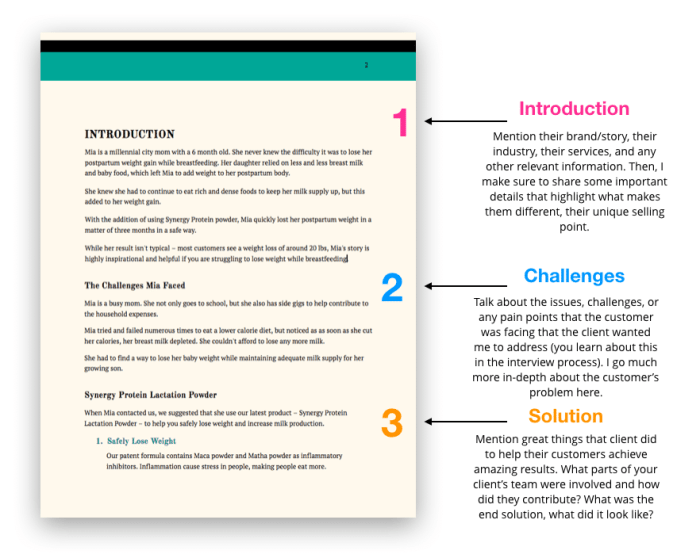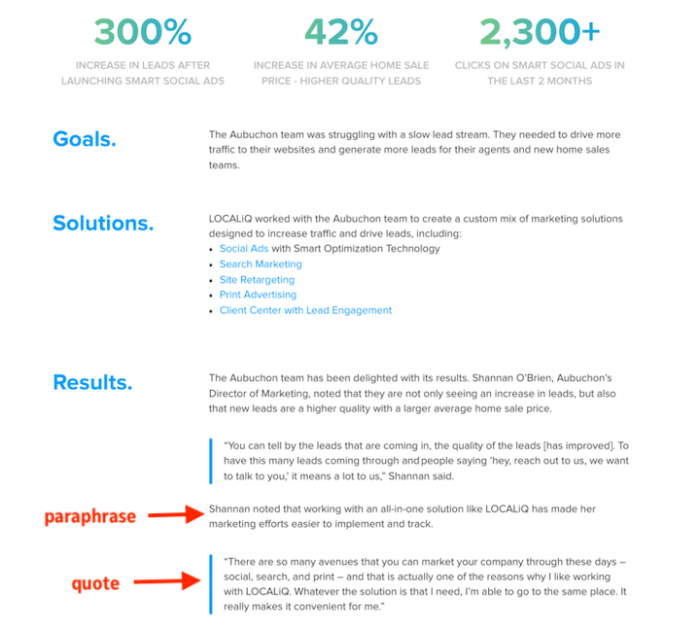Writing Case Studies takes center stage, inviting readers into a world of showcasing success stories and expertise with a flair that’s both captivating and informative. Whether you’re a seasoned writer or just starting out, delving into the art of case studies promises a rewarding journey of storytelling and problem-solving.
Importance of Writing Case Studies
Case studies are like the MVPs of the business world, showcasing success stories that make you stand out from the crowd. They provide concrete examples of how your products or services have helped clients achieve their goals, making it easier for potential clients to visualize how you can do the same for them.
Building Credibility and Trust
Case studies play a crucial role in building credibility and trust with potential clients. By sharing real-life examples of your work and the results you have achieved, you are able to demonstrate your expertise and track record. This tangible evidence helps to establish your credibility and instill trust in your abilities to deliver results.
Demonstrating Problem-Solving Skills
Another key benefit of writing case studies is the opportunity to showcase your problem-solving skills. By outlining the challenges faced by your clients and the strategies you implemented to overcome them, you are able to highlight your ability to think critically, analyze situations, and come up with effective solutions. This not only demonstrates your expertise but also shows potential clients that you are capable of tackling complex issues and delivering positive outcomes.
Components of a Case Study

Case studies are a powerful tool for showcasing the success of a product or service. To create an effective case study, it is essential to include key elements that provide a comprehensive overview of the project. These elements typically include background information, challenges faced, solutions provided, and results achieved. Let’s delve deeper into the components that make up a compelling case study.
Importance of Real Data and Metrics
Using real data and metrics to support the case study narrative is crucial for demonstrating the tangible impact of the solution provided. By incorporating concrete numbers, statistics, and measurable results, you not only validate the success of the project but also provide readers with a clear understanding of the outcomes. Real data adds credibility to the case study and helps in building trust with the audience.
It allows readers to see the actual value delivered and serves as a benchmark for future projects.
Inclusion of Quotes, Testimonials, and Visuals, Writing Case Studies
Quotes, testimonials, and visuals play a significant role in enhancing the case study by adding a human touch and visual appeal. Including direct quotes from clients or team members adds authenticity and credibility to the narrative. Testimonials provide social proof and demonstrate the impact of the solution on real people or businesses. Visual elements such as charts, graphs, before-and-after images, or infographics help in illustrating complex information in a visually appealing manner.
They engage readers and make the case study more compelling and memorable. By incorporating these elements, you can create a well-rounded and impactful case study that resonates with your audience.
Writing Style and Structure: Writing Case Studies
When it comes to crafting a compelling case study, the structure plays a crucial role in engaging the reader from start to finish. A well-organized case study typically includes a catchy title, an engaging introduction, a detailed body that highlights the key points, and an impactful conclusion that leaves a lasting impression.
Recommended Structure
- Start with a Catchy Title: Grab the reader’s attention right from the beginning with a title that is both intriguing and descriptive.
- Engaging Introduction: Set the stage for the case study by providing background information and clearly stating the main problem or issue to be addressed.
- Detailed Body: Present the facts, analysis, and solutions in a clear and concise manner. Use subheadings to break down the information and make it easier to follow.
- Impactful Conclusion: Summarize the key points, reiterate the main takeaways, and leave the reader with a strong call to action or thought-provoking statement.
Maintaining a Clear and Concise Writing Style
- Avoid jargon and technical language that may confuse the reader. Keep your language simple and straightforward.
- Use bullet points or numbered lists to break down information and make it easier to digest.
- Be specific and provide concrete examples to support your points.
- Proofread your work carefully to eliminate any unnecessary words or repetitive phrases.
Using Storytelling Techniques
- Start with a compelling narrative that draws the reader in and creates a sense of connection.
- Use real-life examples and anecdotes to make the case study more relatable and engaging.
- Create a clear structure with a beginning, middle, and end to guide the reader through the story.
- Use descriptive language and vivid details to paint a picture and evoke emotions in the reader.
Target Audience and Tailoring Case Studies

Understanding the target audience is crucial when creating a case study. Tailoring your case study to resonate with different types of readers or industries can significantly impact its effectiveness. Personalization and customization play a key role in making case studies more engaging and relatable.
Tips for Tailoring Case Studies
- Research your target audience: Before writing your case study, research and understand the demographics, preferences, and pain points of your target audience.
- Use industry-specific language: Tailor your case study by using industry-specific jargon and terminology that resonates with your audience.
- Highlight relevant solutions: Customize your case study by focusing on solutions that are most relevant and beneficial to your target audience.
- Include testimonials or quotes: Incorporate testimonials or quotes from similar clients or customers to add credibility and make the case study more relatable.
Role of Personalization and Customization
Personalization and customization are essential in making case studies more effective. By tailoring your content to meet the specific needs and interests of your target audience, you can create a more engaging and impactful case study. Personalization allows you to connect with your readers on a deeper level, while customization ensures that the information presented is relevant and valuable to them.